August 2017
STAR Newsletter
August 2017 edition
Special note: Our thoughts are with our current and former colleagues and their families who have been and continue to be impacted by the devastation of both Hurricane Harvey and monsoon flooding in India. We hope for their continued safety and health.
Contents:
- Meet New Collaborators: Fudan
- From the Spokespersons
- Summer Sunday 2017 Recap
- The STAR Experiment among Czech National Research Priorities
- STAR arts
A note from the editor: as a collaboration-wide communication tool, this newsletter is set up to allow comments (subject to moderation against abuse), and all STAR Collaborators are welcome to do so! Please keep in mind that some content (including all comments) may be considered internal to the Collaboration and only accessible when logged into Drupal. Documentation is available here.
Meet New Collaborators: Fudan
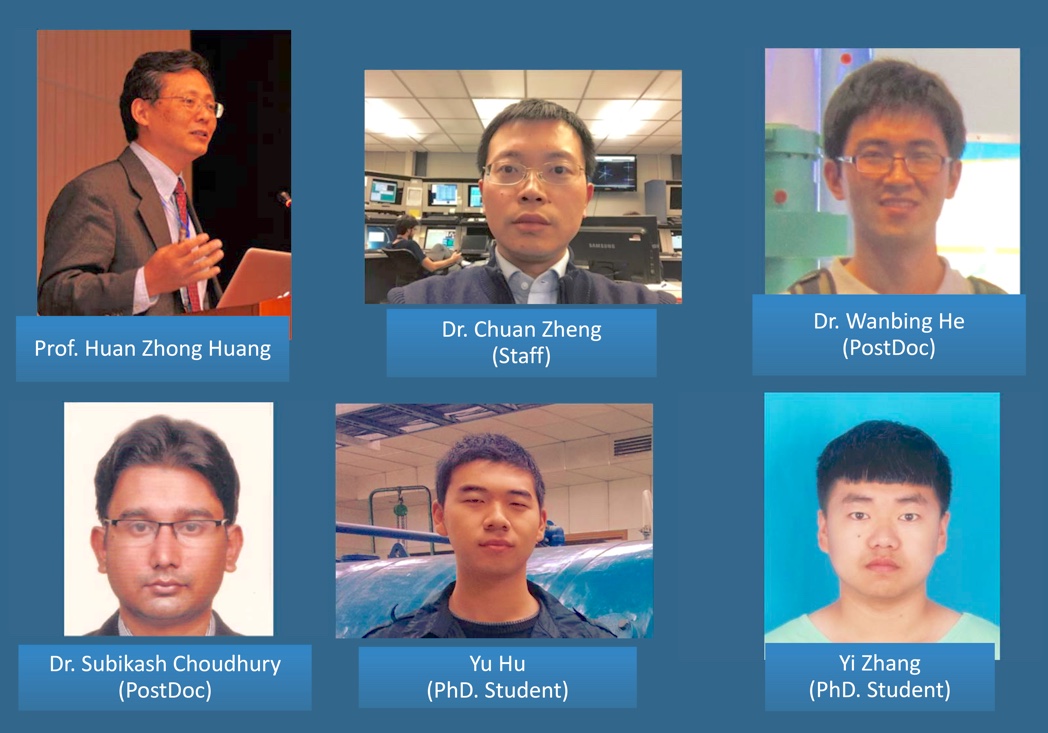
The QCD physics group now includes Chuan Zheng, Wanbing He, Subikash Choudhury, Yu Hu, and Yi Zhang. Chuan received his PhD degree from the Institute of Modern Physics, Chinese Academy of Sciences working on radiative decays of light mesons and baryons with the WASA detector at COSY, Jülich, Germany. Wanbing got his PhD from Shanghai Institute of Applied Physics (SINAP). He is currently working with the team at OSU on the Event Plane Detector and has been learning the analysis of the Chiral Magnetic Effect in his spare time. Subikash received his PhD degree from VECC, India working on the ALICE experiment. The intermediate physics interest is to search for the Chiral Magnetic Effect with isobaric collision data from Run 18. Professor Huan Zhong Huang, who graduated from Fudan with a B.S. degree, is in charge of the development of the high-energy particle and nuclear physics program at Fudan. He will also be a member of the QCD physics group. (Editor's note: many of you know that Huan has been a long-time member of the STAR Collaboration with the UCLA group.)
From the Spokespersons
(Helen Caines - Co-Spokesperson)
I'm very happy to be writing my first Spokespersons' letter! I am looking forward to helping STAR maintain its vibrancy for the next 3 years and thank Jim, Frank, Zhenyu, Grigory, Elke, Jérôme, and Gene for agreeing to work with us on the management team. Zhangbu and I encourage you to contact us via our new alias, starso@star.bnl.gov, for STAR related business. The whole management team can be contacted via starmanage@star.bnl.gov.
This August marks 20 years since the STAR TPC saw its first cosmic ray track, as announced in the understated email below from Jay Marx (then Project Manager of STAR). It would be another 3 years before John Harris (then Spokesperson) would announce first collisions seen at STAR with γ=70. The TPC was constructed and tested before being shipped, still fully assembled, to BNL for installation. An example of one of those first cosmic rays (I can't promise it's the actual first seen and reconstructed) is also below. STAR had been steadily ticking off construction targets for a while, with members of the collaboration delivering progress reports at conferences - see for example this contribution on the TPC system tests by Wayne Betts (now BNL, then UT Austin) - but seeing tracks within the full TPC marked a major landmark on STAR's path to becoming an operational experiment. This anniversary falls as work continues to upgrade the inner TPC sectors in time for the BES-II.
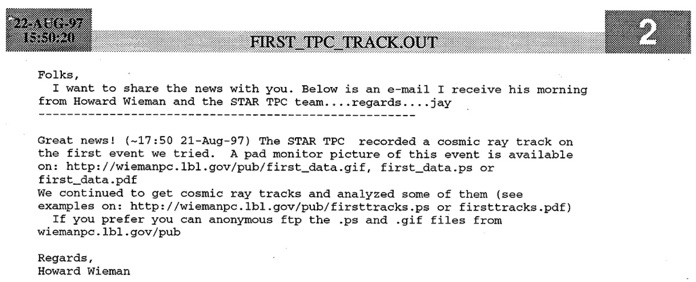
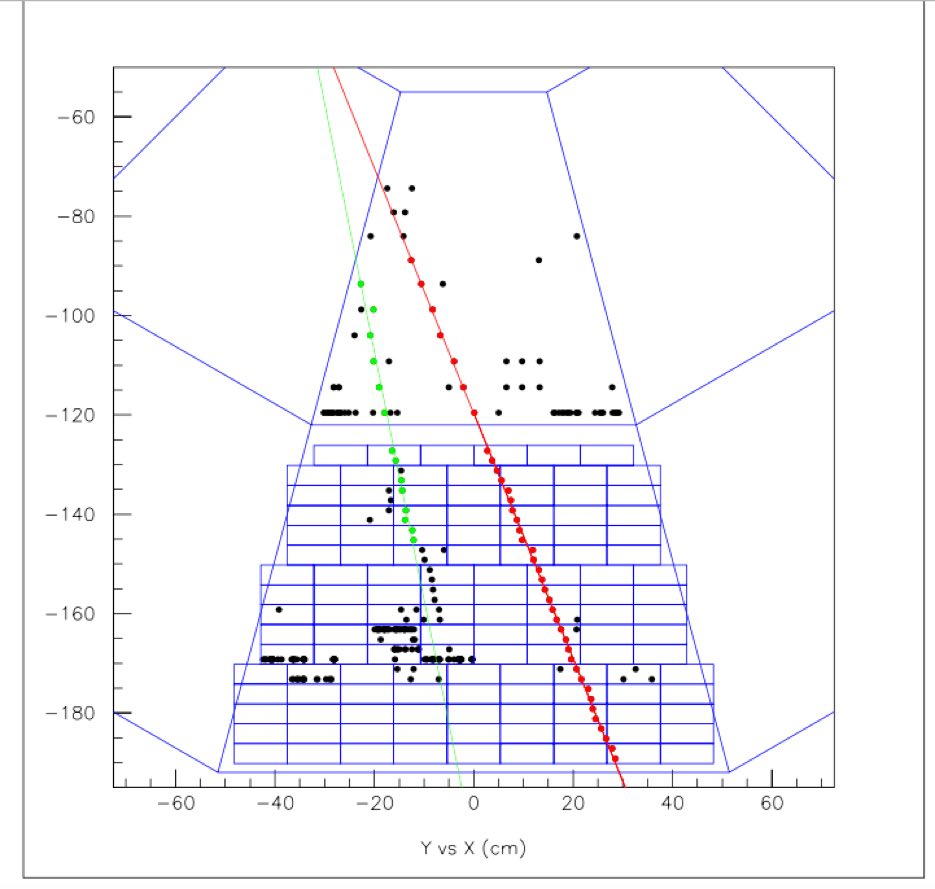
As you all know the final PAC report was released with two significant recommendations for how STAR analyses and releases future data. Important discussions are ongoing within the Council as to what, if any, actions to take with regards to these recommendations. We urge you all to speak with your Council representatives so your opionions are heard.
As summer in the northern hemisphere draws to an end, I note that so far 2017 has been very successful and out in the Hall work preparations for Run 18, including the installation of the EPD and some eTOF modules, are progressing well. So far this year we have published 9 papers (including our front cover Nature article), with 1 other paper accepted and 6 others under journal review. Congratulations also go to Dr. Chris Flores (UC Davis) and Dr. Kevin Adkins (University of Kentucky) who successfully defended their PhD theses since our last Newsletter. With 4 months left in 2017 I hope this fruitful trend continues.
Finally, thanks to all those who contributed to another successful Summer Sunday. Public outreach is vital to the collaboration and field. More details on the event are below.
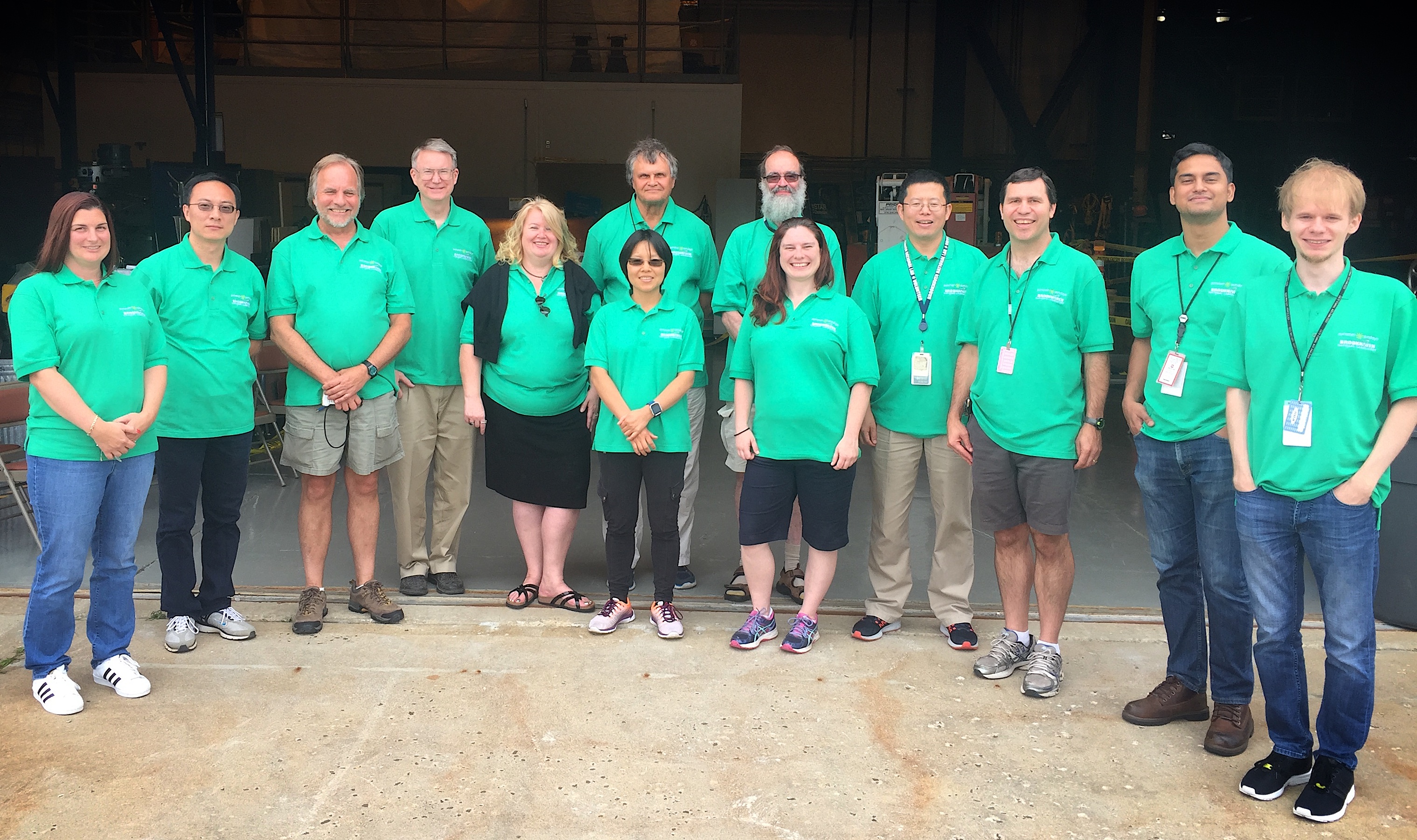
STAR Summer Sunday 2017 volunteers, from left to right: Rachel Nieves, Hongwei Ke, Bill Christie, Jim Thomas, Elke Aschenauer, Lijuan Ruan, Alexei Lebedev (behind Lijuan), Rosi Reed, Flemming Videbaek (behind Rosi), Zhangbu Xu, Gene Van Buren, Prithwish Tribedy, and Dmitry Kalinkin; not pictured: Bob Soja (taking the photo) and Robert Pak (open the image separately to see full resolution)
(Gene Van Buren - BNL)
Dear fellow STAR Collaborators:
As noted in the previous Newsletter edition, RHIC's annual Open House was held on August 6th. Each of the events in BNL's "Summer Sundays" tour program series were seeing record crowds this year, and RHIC (the final event) was no exception. Unofficially, the number of visitors topped 1500, with close to all of them having the opportunity of a guided tour of the STAR Experiment (in prior years, some visitors visited other operating RHIC experiments, possibly skipping STAR, but no other experimental areas were included as tour stops this year). That so many could come through STAR so smoothly, and in the span of only about 5 hours, is an unqualified success. Tremendous credit goes to the 15 STAR volunteers (listed under the photo on the right, taken at the end of the day), including some new faces for 2017, who gave their time and energy to set up (and clean up) the tour areas, welcome and steer the visitors, and explain and answer questions about our work. Their outreach contributions deserve recognition and applause!
Additionally, in preparation for this year's tours, new posters were developed and printed to provide an overview of the RHIC facility and physics topics for STAR, and of the STAR detector (including a virtual tour link, developed by Levente Hajdu) and current collaboration. You may find these posters on permanent display at the experiment hall (for year-round tours), and in the STAR corridor at BNL's physics department, as well as online here.
Please consider joining the Summer Sunday effort next year!
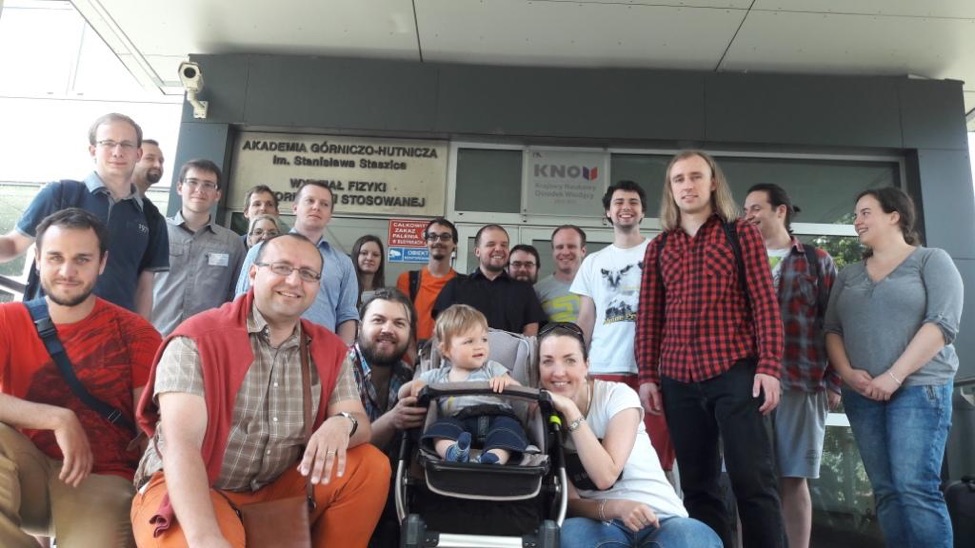
June 15, 2016 – The Czech STAR group during the STAR Regional Meeting in Cracow (Poland). From left: Miroslav Šimko (NPI), Jindřich Lidrych (CTU), Miroslav Myška (CTU), Martin Kocmánek (NPI), Jan Rusňák (NPI), Olga Rusňáková (CTU), Jaroslav Bielčík (CTU), Michal Broz (CTU), Alena Harlenderová (CTU), Pavol Federič (NPI), Jakub Kvapil (CTU), Filip Federič (a future member of the STAR Collaboration), Jan Vaněk (CTU), Miroslav Šaur (NPI), Pavla Federičová (CTU), Petr Chaloupka (CTU), Robert Ličeník (CTU), Leszek Kosarzewski (WUT Warsaw, Poland), Oliver Matonoha (CTU), Jana Fodorova (CTU)
(Petr Chaloupka - Czech Technical University)
Czech researchers have been a part of the STAR experiment since the first collisions at RHIC in 2000. However, at that time the team from the Nuclear Physics Institute of the Czech Academy of Sciences (NPI of the CAS) had only two members. In the last ten years, the Czech presence in STAR grew to almost thirty researchers and students from two Czech institutions. The STAR team at NPI is led by Jana Bielčíková, and the team from the Czech Technical University in Prague, where the STAR group was founded in 2007, by Jaroslav Bielčík.
Naturally, such a team size brings challenges in terms of sustainable human and material resources. We are very happy to share the news that the STAR teams from NPI and CTU together with our Czech colleagues from the Charles University in Prague working on PHENIX/sPHENIX experiments and the Center of Applied Physics and Advanced Detection Systems detector laboratory at CTU, have achieved a major success which allows to secure and promote future participation of Czech scientists at BNL. Within the recent European and Czech national strategy, it has been decided to concentrate on support of large open-access research infrastructures of a high scientific and educational importance. The multi-institutional team led by Dr. Bielčík proposed and successfully pushed through a project supporting participation of Czech scientists at BNL. The research conducted at BNL has thus become one of the main Czech national interests and was included to the 2016-2022 Czech Roadmap for Large Infrastructures together with other large scale projects such as CERN or Pierre Auger observatory.

Miroslav Šimko from NPI of the CAS working on the ZDC detector
Most importantly the inclusion of BNL among the large infrastructure projects in the Czech Republic guarantees long term support of the planned Czech scientific activities at BNL. This gives Czech scientists a hope that their future scientific projects connected with BNL will have a significant advantage in obtaining the financial support from Czech funding agencies. It is especially true for projects which include international partners and collaboration. The first such project was submitted in 2016 and received funding in June 2017. This three-year project supports among others the Czech STAR activities in jet and heavy flavor physics as well as in correlation femtoscopy. This new project also allows to start completely new activities in cooperation with the STAR group at the Frankfurt Institute for Advanced Studies (FIAS) in Germany. Within this collaboration scientists from Germany and the Czech Republic will work on development of new particle reconstruction and high level triggering algorithms.
We would like to point out that the scientific community of the STAR Collaboration and that of BNL at large was one of the reasons why the proposed project was successful. Not only the obvious excellence of the research conducted at BNL and STAR was important. The educational aspects of the multinational collaborations at RHIC and the dedicated support which BNL and the whole heavy-ion community at RHIC offers to young students were one of the key elements as well. Already more than 40 student theses at bachelor, master, or doctoral level covering various topics related to research carried at STAR were completed in the Czech Republic. We are hence looking forward to continue working at STAR in undiminished numbers and collaborating even more with colleagues within the new project.
STAR arts
(Frank Geurts - Rice)
This is a recently introduced feature we're trying with the STAR Newsletter for Collaborators to contribute something creative/artistic that relates to STAR. This could be a really cool looking graph generated from some analysis, or a striking photograph. The idea is akin to the "Back Scatter" feature of Physics Today (example), or the Picture of the Month of CERN Courier (example). Please feel free to have fun with this and consider making a contribution yourself for the next edition!

An embossed STAR event on a building column at Rice University (click on the image for a higher resolution version)
Previous Edition: June 2017
Groups:
- Printer-friendly version
- Login or register to post comments
